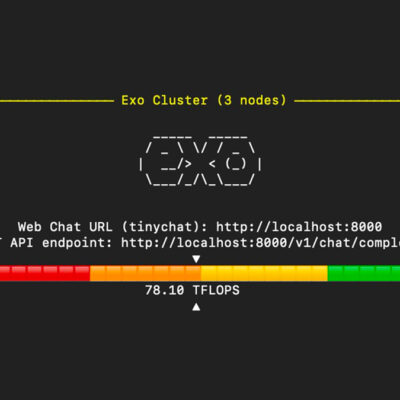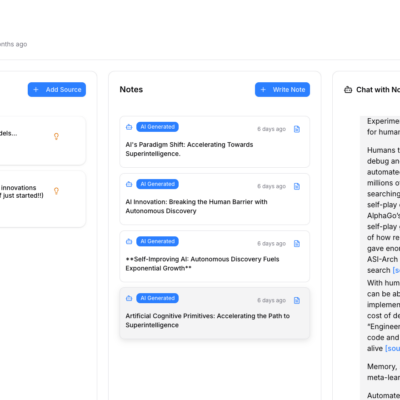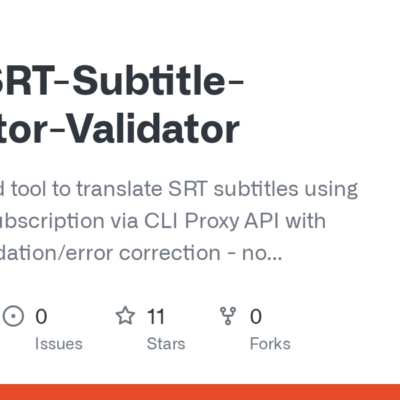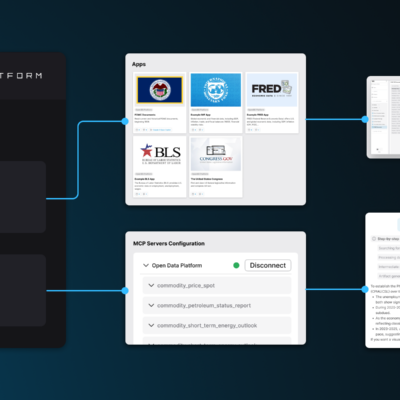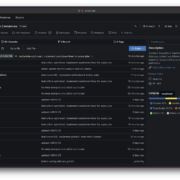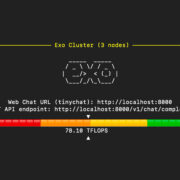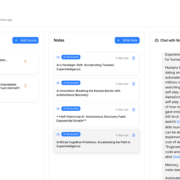The world of artificial intelligence is rapidly evolving, and with the introduction of Google’s Agent Development Kit (ADK), building sophisticated AI agents and automating complex workflows has become more accessible than ever. From my experience working with various AI frameworks, ADK stands out for its flexibility and power, enabling developers to create intelligent systems that truly transform how we interact with technology. This guide will walk you through the essentials of the Google Agent Development Kit, from setting up your first single agent to empowering it with advanced tools and understanding multi-agent collaboration.
Understanding the core components of ADK agents
At the heart of any ADK application is the agent. Think of an agent as an intelligent entity designed to perform specific tasks based on the instructions it receives. When you begin developing with ADK, you’ll always start with at least one “root agent,” which serves as the primary entry point for all incoming requests and the orchestrator of your AI ecosystem.
Every agent you create within ADK is defined by several core properties:
- Name: This is a unique identifier for your agent. It’s crucial for tracking which agent is responsible for specific outputs, especially in multi-agent setups. Crucially, the agent’s name must precisely match its corresponding folder name in your project structure; otherwise, ADK will encounter errors.
- Model: The brain of your agent. While ADK is remarkably flexible, allowing you to integrate models from various frameworks like OpenAI or Anthropic, Google’s Gemini models are typically the easiest to get started with. For many common applications, I often default to Gemini 2.0 No Flash. This model offers impressive capabilities, including multimodal features and a substantial 1 million token context window, all at an incredibly affordable cost.
- Description: This property becomes particularly vital in multi-agent systems. The description provides a high-level overview of the agent’s specialization, helping a root agent or other coordinating agents determine which specialist agent is best suited to handle a particular task. For example, a “copywriting agent” would have a description highlighting its expertise in generating text, allowing the system to delegate writing tasks to it. In single-agent scenarios, its immediate utility is less apparent, but it’s good practice to include it.
- Instructions: Arguably the most critical property, the instructions tell your agent exactly what to do and how to do it. These can range from simple commands like “greet the user” to highly complex, multi-step directives. The clarity and detail of these instructions directly impact your agent’s performance and ability to follow prompts accurately.
Mastering the ADK project structure
A well-organized project structure is fundamental to working efficiently with the Google Agent Development Kit. ADK has specific requirements for how you set up your agent folders and files, ensuring smooth operation.
Within each agent’s dedicated folder, you’ll typically find three core components:
__init__.pyfile: This file signals to Python that the directory is a package, allowing it to be imported. In the context of ADK agents, it contains critical information that helps ADK discover and import the agent definition within that folder..envfile: This file is where you securely store environment variables, most notably your API keys. A key best practice here is that you only need one.envfile per project, and it should reside within your root agent’s folder. Even when building complex multi-agent solutions with numerous agents, a single.envfile in the root is sufficient for all agents to access necessary credentials.agent.pyfile: This is where the core logic and definition of your agent reside. As a crucial reminder, the name of this file (e.g.,greeting_agent.py) must exactly match the name of its containing folder (e.g.,greeting_agent). Any mismatch will lead to errors and prevent your agent from running.
For convenience, I often provide an example.env file in my projects. Users simply rename this to .env and paste their API key directly into it, streamlining the setup process.
Setting up your ADK development environment
Before you can run your first Google Agent Development Kit agent, you need to set up a proper Python development environment and install the necessary dependencies. This process is straightforward but crucial for avoiding conflicts between different projects.
I always recommend using a virtual environment for each Python project. This practice isolates your project’s dependencies, preventing version clashes and ensuring that each project runs with its specific requirements.
Here’s a typical step-by-step process I follow:
- Dependencies: Start by defining your project’s dependencies in a
requirements.txtfile. The primary dependency will, of course, begoogle-cloud-aiplatform(or specific ADK-related packages if they differ). This file lists all the Python packages your project needs to function correctly. By including all dependencies upfront, you minimize future installation steps. - Create a Virtual Environment: Open your terminal in the root directory of your project and run
python -m venv venv. This command creates a new folder namedvenv(you can name it anything you prefer) containing a fresh, isolated Python environment. - Activate the Virtual Environment:
- macOS/Linux:
source venv/bin/activate - Windows:
.\venv\Scripts\activate
Activating the environment ensures that any packages you install are confined to this specific environment, not globally on your system.
- macOS/Linux:
- Install Dependencies: With your virtual environment activated, install all listed dependencies using
pip install -r requirements.txt. This command reads yourrequirements.txtfile and installs everything needed, including the Google Agent Development Kit framework.
Once these steps are complete, your development environment is fully prepared to handle all the examples and projects within ADK.
Obtaining and configuring your google cloud api key
To interact with Google’s AI models and run your ADK agents, you’ll need an API key from Google Cloud. This process involves setting up a Google Cloud project and enabling the necessary APIs.
Here’s how I typically guide new users through obtaining and setting up their API key:
- Access Google Cloud: Navigate to the Google Cloud Console and sign in or create an account. If it’s your first time, you might qualify for free credits, which is a great way to start experimenting without immediate cost concerns.
- Create a Project: From the console, create a new project. I usually name it something descriptive like “YouTube ADK Crash Course” or “My ADK Projects.” You’ll also need to link a billing account, even if you’re using free credits. This is a prerequisite for API usage.
- Navigate to AI Studio/API Keys: Once your project is active and selected in the console, head over to the AI Studio or the “APIs & Services” > “Credentials” section.
- Generate API Key: Click on “Create API Key.” Provide a name for your key (e.g., “ADK Agent Key”) and allow Google to generate it.
- Copy and Configure: Immediately copy the generated API key. It’s crucial not to share this key publicly. Then, paste this key into your project’s
.envfile (which you renamed fromexample.envas discussed earlier). The key will typically be assigned to a variable likeGOOGLE_API_KEY.
With your API key securely configured, your agents can now authenticate and make requests to Google’s powerful AI models.
Running your first ADK agent and understanding its workflow
Having set up your environment and configured your API key, it’s time to bring your first ADK agent to life. The Google Agent Development Kit offers a robust command-line interface (CLI) and a fantastic web interface for interacting with and observing your agents.
Running the agent via the CLI
First, ensure your terminal is navigated to the directory containing your root agent (e.g., cd basic_agent).
From there, the primary command-line tool is adk. Typing adk by itself displays a list of available commands:
adk api-server: Launches an API endpoint, allowing you to send programmatic requests to your agent.adk create: Helps scaffold new agent folders. For our pre-built examples, this isn’t necessary.adk deploy: Deploys your agents to a cloud environment.adk eval: Used for testing and evaluating agent performance.adk run: Allows you to interact with your agent directly within the terminal.adk web: This is my preferred command for local development. It spins up a user-friendly web interface, providing real-time insights into your agent’s operations.
To run your first agent and get a visual understanding, execute:
adk webThis command will provide a local URL (usually localhost:5000) where you can access the ADK web interface.
Exploring the ADK web interface
The ADK web interface is an invaluable tool for debugging and understanding agent behavior. Here’s a quick overview of what you’ll find:
- Agent Selection: In the top-left corner, you can select which agent you want to interact with. For a single-agent setup, it will automatically select your root agent.
- Events: This tab is where the magic happens. As your agent processes requests, you’ll see a live stream of “events.” These events log every step of the agent’s internal thought process, including the messages received, the decisions made, and the responses generated. Drilling into an event reveals the full request and response, including the system instructions (a combination of your agent’s description and instructions) and the user’s message.
- State: This section stores information that your agent needs to remember across interactions, especially crucial for agents with memory.
- Session: A session represents a continuous conversation between you and the agent. You can create multiple sessions to have separate chats without confusing the agent’s context.
Interacting with your first agent
Let’s test a simple agent. If your agent’s instructions are something like: “you are a helpful assistant that greets the user. ask the user’s name and greet them by their name,” you can start chatting:
- You: “hey, how are you?”
- Agent: “i am doing well, thank you for asking! to make things a little bit more personal, what’s your name?”
- You: “my name is [your name].”
- Agent: “hey, [your name]!”
As you interact, observe the “Events” tab. You’ll see the agent processing each turn, demonstrating its ability to follow instructions, ask clarifying questions, and generate personalized responses based on the conversation history. This real-time visibility into the agent’s lifecycle is one of the most powerful features of the ADK web interface.
Supercharging your agents with tools
While an agent’s instructions guide its core behavior, tools dramatically extend its capabilities. Tools allow agents to interact with the external world, perform specific actions, or access specialized information. The Google Agent Development Kit offers excellent flexibility in integrating various types of tools.
Types of tools in ADK
From my experience, there are three primary categories of tools you’ll work with in ADK:
- Function Calling Tools (Custom Python Functions): These are the most common and versatile. You define a standard Python function that performs a specific action (e.g.,
get_current_time,look_up_stock_price). Your agent can then “call” this function when its internal reasoning determines that the task at hand requires that specific capability.- key considerations:
- Docstrings: Provide clear and descriptive docstrings for your functions. The agent uses these docstrings to understand what each tool does and when to invoke it.
- Return Values: When a tool returns data to the agent, make the return dictionary as explicit and informative as possible. Instead of just returning a raw value, label it clearly (e.g.,
{"current_time": "10:30 AM"}instead of just"10:30 AM"). This helps the agent accurately interpret and utilize the tool’s output. - Parameters: Define function parameters with clear type hints. Avoid default values for parameters in your tool functions, as ADK currently doesn’t support them, which can lead to unexpected errors.
- key considerations:
- Built-in Google Tools: ADK provides several powerful pre-built tools directly from Google, which are incredibly convenient for common tasks:
- Google Search: Allows your agent to perform web searches and retrieve information. This is exceptionally powerful for general knowledge tasks.
- Vertex AI Search: Ideal for Retrieval-Augmented Generation (RAG) capabilities, allowing agents to search internal knowledge bases or specific datasets.
- Code Execution: Enables the agent to write and execute code.
- important limitation: Built-in tools currently only work with Gemini models. If you’re using OpenAI or other third-party models, these built-in tools will not function. Additionally, you can only pass one built-in tool to an agent at a time. For instance, you cannot use both Google Search and Code Execution simultaneously on a single agent.
- Third-Party Tools: If you’re familiar with frameworks like LangChain or Crew AI, you’ll appreciate that ADK is designed to be open. It’s possible to integrate tools from these other libraries, though this typically involves more advanced configuration and is often beyond the scope of an initial deep dive.
Adding tools to your agent
To integrate tools, you add a tools property to your agent’s definition. This property is a list containing references to the tools your agent can use.
For instance, to use the built-in Google Search tool, your agent definition might look something like this:
# Assuming you've imported the necessary built-in tool
from agent_development_kit.tools import GoogleSearch
class ToolAgent:
name = "tool_agent"
model = "gemini-2.0-no-flash"
description = "An agent capable of searching the web."
instructions = "Answer questions using web search."
tools = [GoogleSearch()] # Add the tool hereIf you’re adding a custom Python function tool, you’d define your function and then reference it in the tools list. ADK automatically registers properly decorated Python functions as tools.
import datetime
def get_current_time() -> dict:
"""Gets the current time."""
return {"current_time": datetime.datetime.now().strftime("%H:%M:%S")}
class CustomToolAgent:
name = "time_agent"
model = "gemini-2.0-no-flash"
description = "An agent that can tell the current time."
instructions = "Tell the user the current time when asked."
tools = [get_current_time] # Reference the functionImportant limitations to consider
One crucial limitation I’ve encountered that can cause frustration is that you cannot combine built-in tools with custom function tools within the same agent definition. If you try to include both, ADK will throw an error. This means you’ll need to design your agents strategically: either they use a single built-in tool, or they use multiple custom Python function tools.
Beyond the basics: what else ADK offers
While we’ve delved deep into the fundamentals of building single agents and integrating tools, the Google Agent Development Kit extends much further. As you progress from a beginner to a professional, you’ll uncover features like:
- Structured Outputs: Ensuring your agents generate responses in specific formats (e.g., JSON) for seamless integration with other APIs.
- Session and Memory: Allowing agents to remember past conversations and maintain context across interactions. This is essential for building more natural and coherent conversational AI.
- Persistent Data Storage: Enabling agents to save their session and memory to databases, ensuring that their knowledge and conversation history persist even after the application closes.
- Multi-Agent Solutions: Orchestrating multiple agents to work collaboratively on complex tasks, delegating sub-tasks based on their specialized descriptions and tools.
- Callbacks: Gaining fine-grained control over an agent’s lifecycle, allowing you to execute custom logic before, during, or after an agent runs.
- Advanced Workflows: Implementing sophisticated interaction patterns between agents:
- Sequential Agents: Where agents work in a predefined order (Agent A completes, then Agent B, then Agent C).
- Parallel Agents: Multiple agents work on parts of a task simultaneously, combining their results at the end.
- Looped Agents: Agents continuously iterate and refine their work until a desired output or condition is met.
Conclusion
The Google Agent Development Kit provides a powerful and intuitive framework for building intelligent AI agents and automating complex workflows. By mastering the core concepts—understanding agent attributes, adhering to the project structure, setting up your environment, securing API keys, and effectively leveraging tools—you lay a solid foundation for creating highly capable AI solutions.
From simple conversational agents to sophisticated multi-agent systems that perform web searches, execute code, and manage data, ADK equips you with the tools to innovate. Dive in, experiment with these concepts, and you’ll quickly find yourself transforming ideas into intelligent, automated realities with the Google Agent Development Kit. The journey from beginner to pro in AI agent development is an exciting one, and ADK makes it remarkably accessible.

